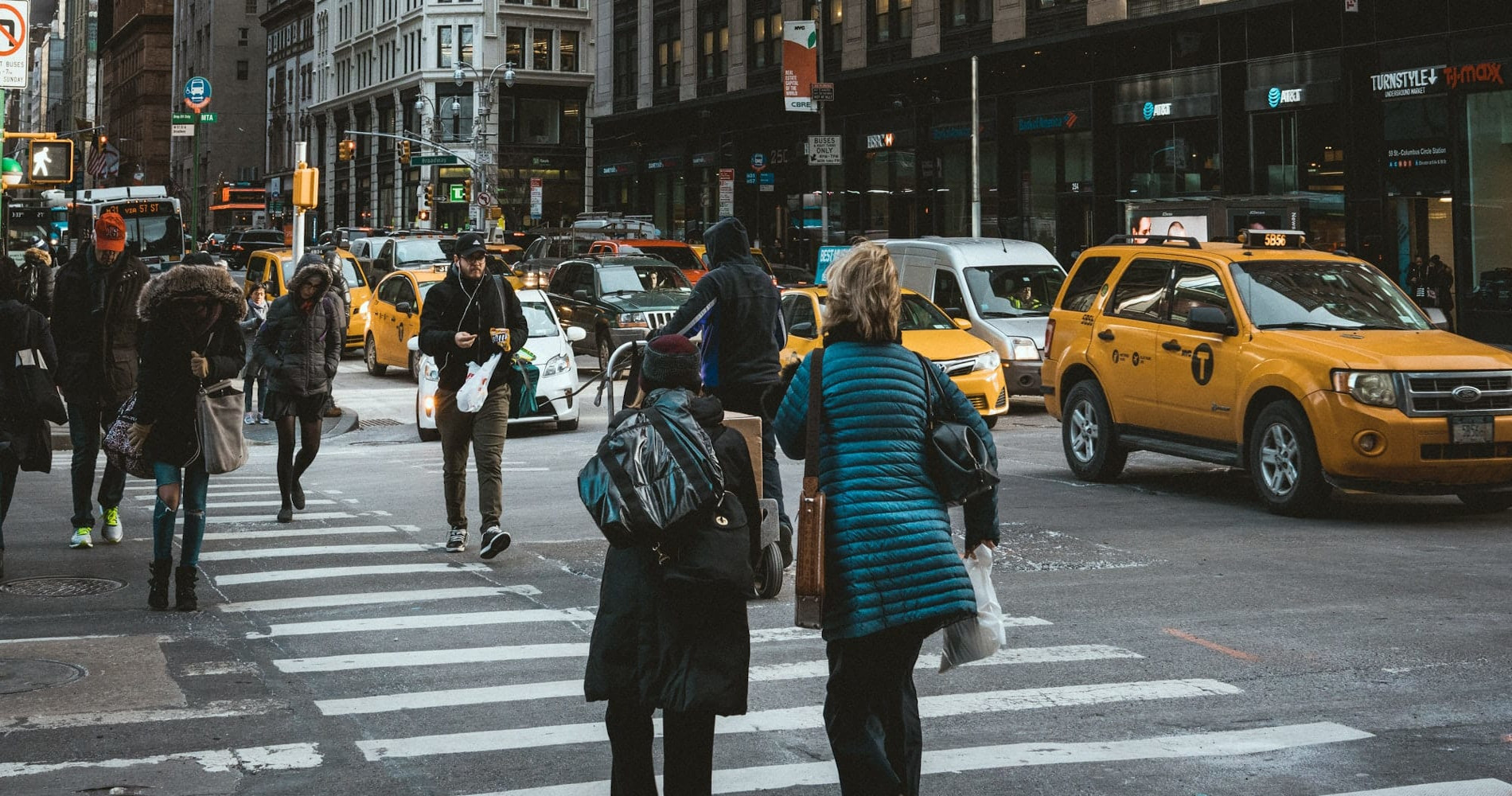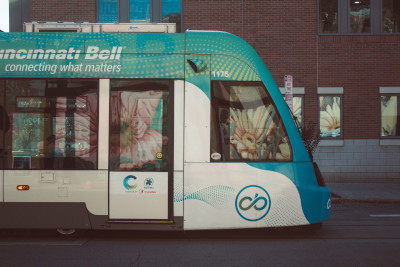
Is it challenging for a smart city to be accessible for deaf and hearing impaired people? Yes and no.
It is challenging in the sense that a smart city that meets the needs of the deaf community fosters inclusion. The concern is broad. But it’s not that complex to implement.
From the conception of your smart city, take into account the difficulties met by people with hearing impairments. The smart city is the future. It needs to be exemplary in terms of accessibility.
Let’s see what an accessible smart city looks like for the deaf and hard of hearing and for you as well as decision maker.
What is a smart city?
Putting people first thanks to the use of technology. That’s how we could define what a smart city is.
It relies on information and communication technology (ICT) and the Internet of Things (IoT) to connect residents with their city.
This means a smart city serves its people. It collects data and information from people, transportation, devices and buildings. Everything that enables a smart city to improve its operational services.
That’s what makes people’s lives easier. And we can even go further by ensuring the smart city is accessible for deaf and hearing impaired people.
The deaf community needs to easily access information on public transportation, real-time traffic… A smart city represents the perfect opportunity to foster inclusion.
What solutions can you find in a smart city for deaf and hearing impaired people?
The question could also be: what do deaf and hard of hearing people need to fully enjoy their city? Let’s take a closer look at their struggles in a regular city and the solutions that can be found in a smart one:
Difficulties of the hearing impaired | Solutions for an accessible smart city |
Accessing real-time information on public transit: it may only be available through audio. | The MaaS platform: it regroups all modes of public transit at the disposal of users. Deaf and hearing impaired people can plan their trip according to their preferences. |
Having real-time traffic information on buses | Smart urban furniture like smart benches where users can charge their phones and get free WiFi. If installed at a bus stop, deaf and hard of hearing people can access real-time information about the bus timetables. |
Having real-time traffic information when driving | A GPS with real-time traffic updates like Garmin or TomTom. |
Finding their way in a complex venue like a shopping mall or a public transport network: they may lack visual signage. | An indoor navigation app like Evelity can help them find their bearings. The app adapts to the user’s profile. Deaf and hard of hearing people have text instructions. |
Communicating with hearing employees: the venue may not have audio induction loops and the staff may lack training in knowing how to interact with deaf or hard of hearing people. | An instant transcription app like Ava: the conversation is transcribed for deaf people who don’t have to lip-read. A live transcription app for phone calls like RogerVoice: when phoning a venue to make enquiries, people with hearing impairments receive a typed text of what the other person is saying. They can reply thanks to voice synthesis. |
Of course, there are solutions to conceive a smart city that meets the needs of different categories of people like smart buildings.
These smart infrastructures aim at enhancing the user experience. From their conception, everything is designed to meet the needs of people: the elderly, people with disabilities with various capabilities…
Just like a smart city, smart buildings collect and share data for users. Deaf and hearing impaired people can easily have access to any information within a smart building. Especially since they rely on phygital to provide universal accessibility.
Check out more information about smart buildings:
The 5 Keys of Tomorrow’s Smart Building
As you can see, the most important challenge for a smart city to be accessible and inclusive for deaf and hearing impaired people is to maintain the chain of information at all times.
A smart city is molded to suit its residents. Even though technology is at its center, it’s managed and controlled by humans. It’s at the service of deaf and hard of hearing people and ensures accessibility.
Why should you focus on an accessible smart city for deaf and hard of hearing people?
You want a smarter, better and more efficient city? Then focusing on conceiving an accessible smart city is the best way to achieve it.
There are many benefits in creating a smart city fit for deaf and hearing impaired people:
⊗ Your city works as an ally: a smart city easily removes accessibility barriers like accessing information for the deaf community.
⊗ Your city is at the forefront of inclusion: keep in mind inclusion is not a trend. It’s meant to stay. What you implement has a purpose and truly makes a difference.
⊗ Your city is more effective thanks to data collection: you can analyze different types of information regarding the operational services of your smart city. This means you can know how deaf and hearing impaired people get around and what they need to make their lives easier.
⊗ Your city invests in what benefits its residents: through data collection, you know where to inject your money. You can better spend your city’s budget on projects that truly meet the needs of deaf and hard of hearing people.
As you can see, the smart city you conceive can be accessible to the 48 million of deaf and hearing impaired people who live in the United States. Inclusive solutions regarding communication and information represent a true asset to put your city on the map. You have the opportunity to better serve different categories of people. It’s up to you to seize it.
Want to know more about the issues of the deaf community? Check out these articles:
12 Tips to Welcome a Deaf or Hard of Hearing Person
Hearing Impaired People: a Multitude of Profiles for Different Needs
5 Must-Have Apps for Deaf and Hard of Hearing People in 2022
Published on September 9th, 2022
media

The most important challenge for a smart city to be accessible and inclusive for deaf and hearing impaired people is to maintain the chain of information at all times.
writer

Carole Martinez
Content Manager
stay updated
Get the latest news about accessibility and the Smart City.
other articles for you

Open Data Is Key to Fostering Universal Accessibility
Open data represents an opportunity for cities to reach universal accessibility. It shows the missing links of the mobility chain.
Our Audio Beacons Guide the Blind and Visually Impaired at the Helsinki Subway
The Helsinky subway improved their audio signage system by installing on demand and remotely activated audio beacons.
7 Good Reasons to Install Audio Beacons at Your Public Transport Network
Audio beacons are an efficient way to provide more autonomy to blind and visually impaired people. They can easily use public transport.

Will Remote Activation Become the Norm for Accessible Pedestrian Signals?
More and more cities like New York have been exploring remote activation to trigger accessible pedestrian signals.
share our article!
more articles

Disability Statistics in the US: Looking Beyond Figures for an Accessible and Inclusive Society
Disability Statistics in the US: Looking Beyond Figures for an Accessible and Inclusive Society Around 61 million adults in the United States live with a disability. Diving into disability statistics in the US will help us know exactly who is concerned and what...
Our Audio Beacons Guide the Blind and Visually Impaired at the Helsinki Subway
Our Audio Beacons Guide the Blind and Visually Impaired at the Helsinki SubwayOur audio beacons equip the new line of the Helsinki subway in Finland. They help blind and visually impaired people locate the points of interest of a station. For users with visual...

Will Remote Activation Become the Norm for Accessible Pedestrian Signals?
Will Remote Activation Become the Norm for Accessible Pedestrian Signals?Without pushbutton, there are no accessible pedestrian signals. That’s how APS work in the U.S. But more and more cities have been exploring remote activation like New York City. The Department...

Hearing Impaired People: a Multitude of Profiles for Different Needs
Hearing Impaired People: a Multitude of Profiles for Different Needs Did you know that hearing impaired people have several profiles and that the way they identify themselves is important? You may be familiar with deaf and hard of hearing people but for each of...
NEVER miss the latest news about the Smart City.
Sign up now for our newsletter.
Unsubscribe in one click. The information collected is confidential and kept safe.
powered by okeenea
The French leading company
on the accessibility market.
For more than 25 years, we have been developing architectural access solutions for buildings and streets. Everyday, we rethink today’s cities to transform them in smart cities accessible to everyone.
By creating solutions ever more tailored to the needs of people with disabilities, we push the limits, constantly improve the urban life and make the cities more enjoyable for the growing majority.


